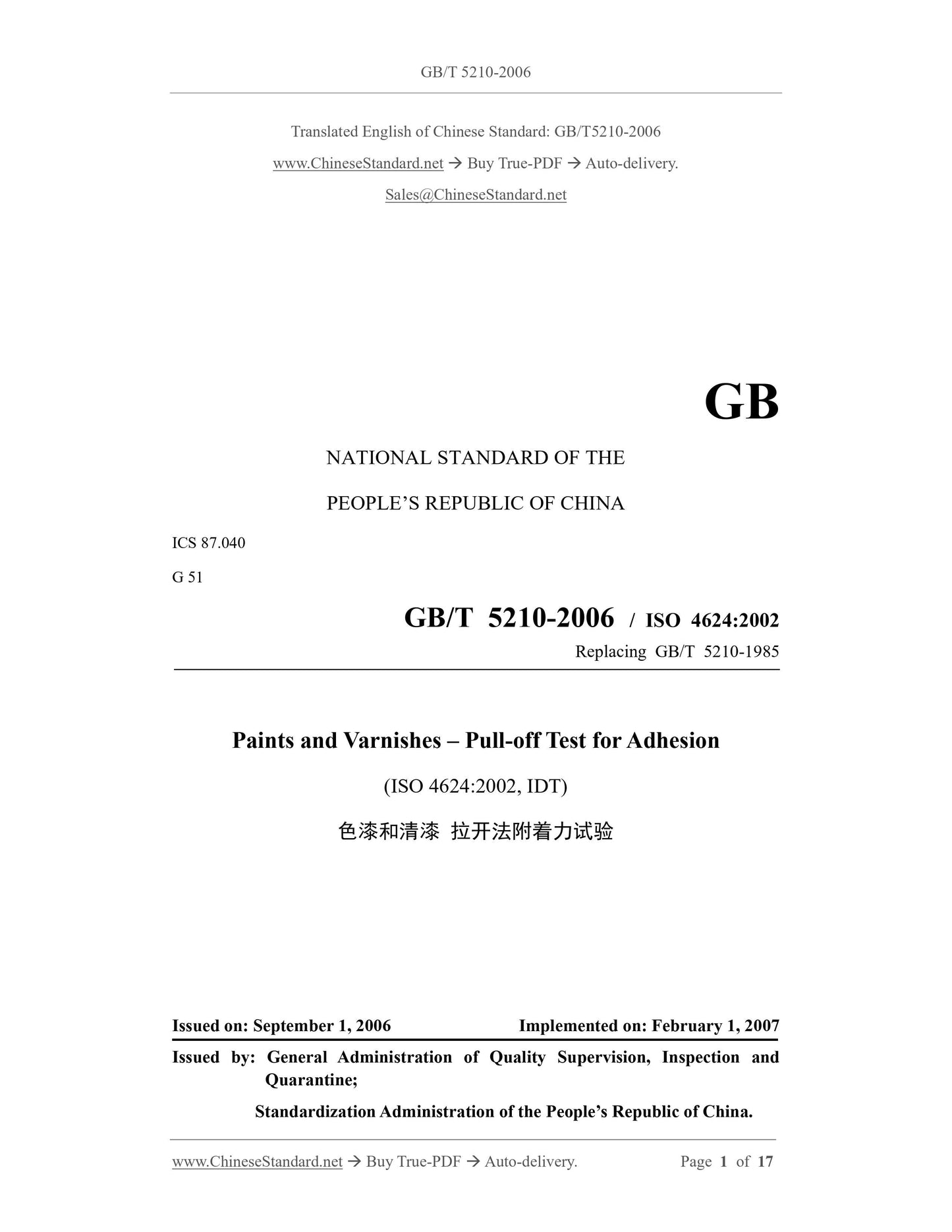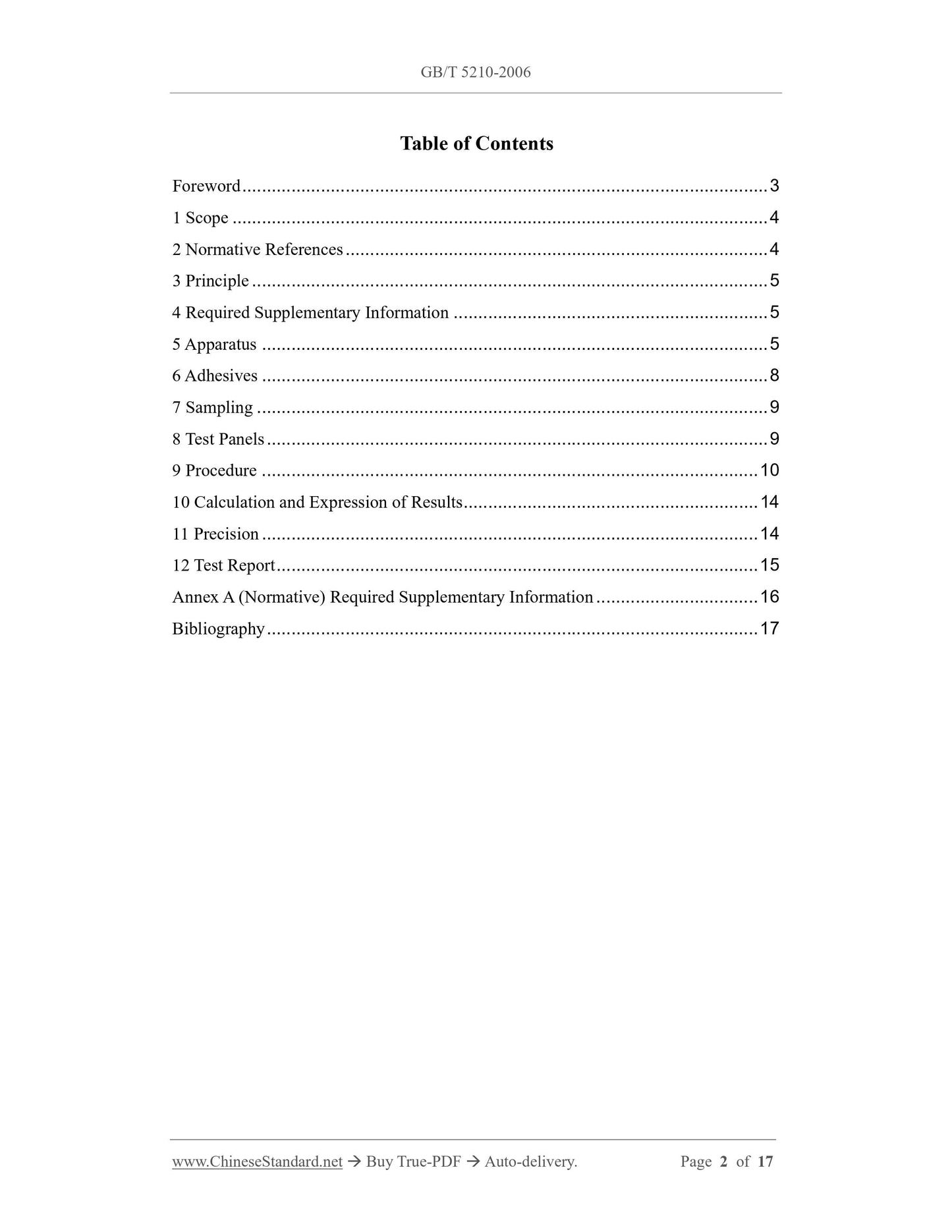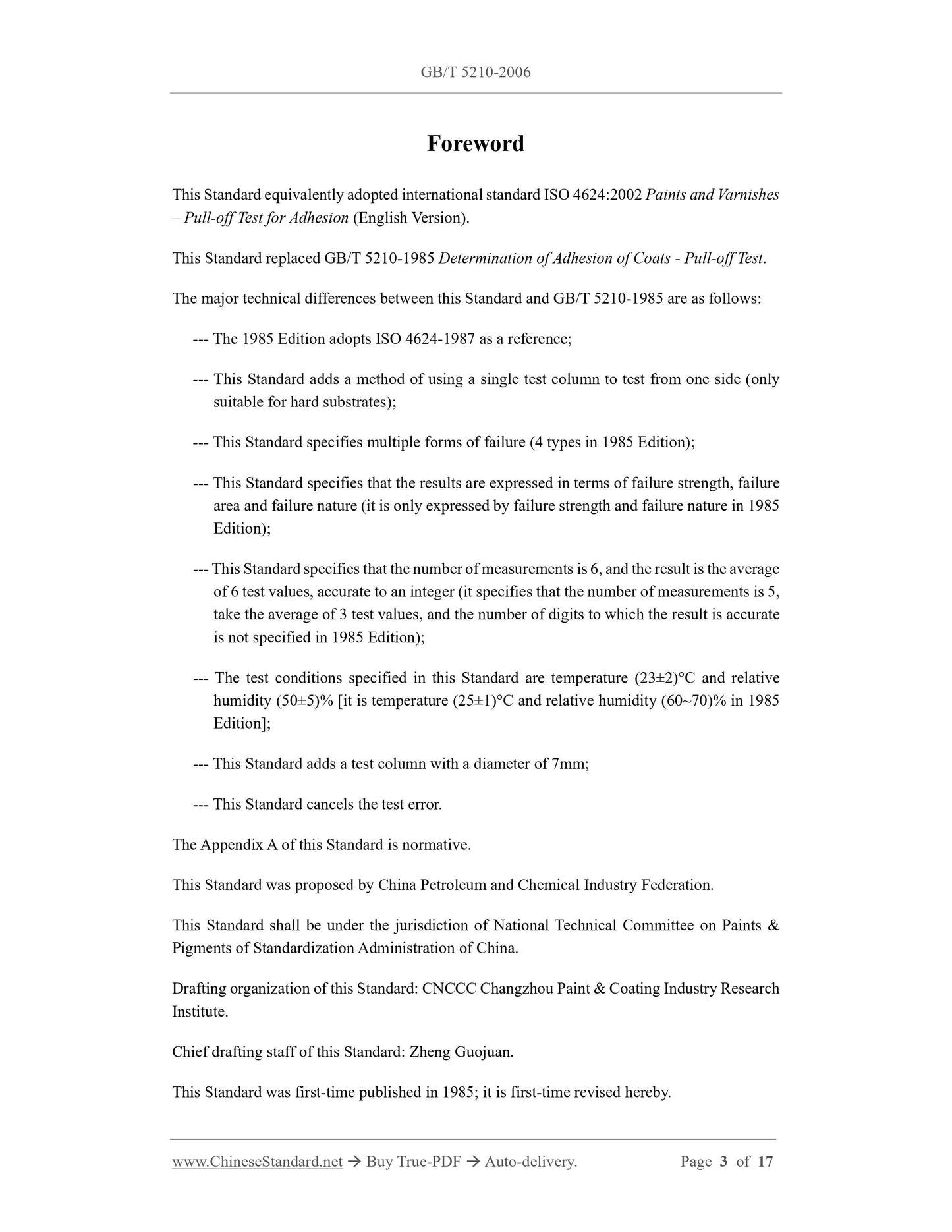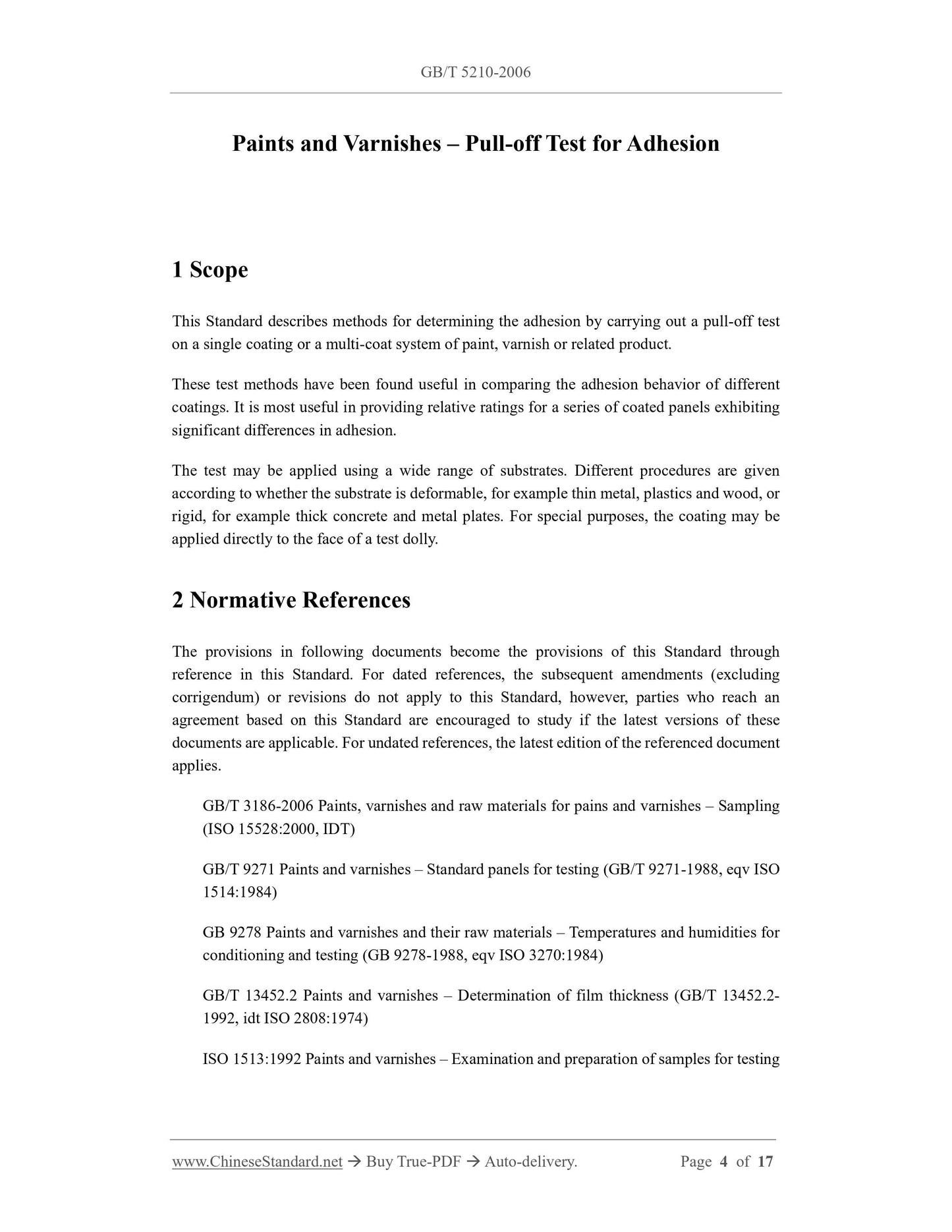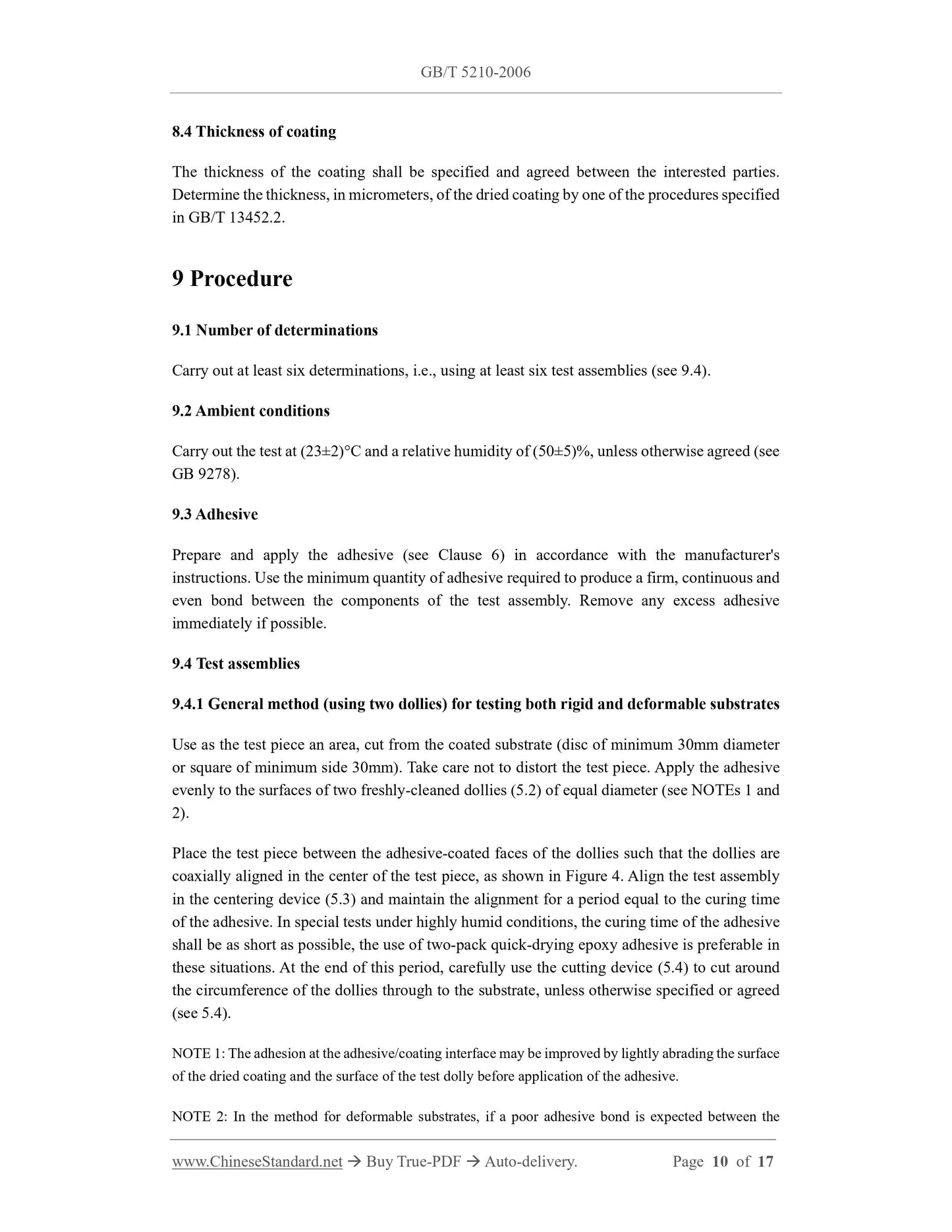1
/
of
5
www.ChineseStandard.us -- Field Test Asia Pte. Ltd.
GB/T 5210-2006 English PDF (GB/T5210-2006)
GB/T 5210-2006 English PDF (GB/T5210-2006)
Regular price
$75.00
Regular price
Sale price
$75.00
Unit price
/
per
Shipping calculated at checkout.
Couldn't load pickup availability
GB/T 5210-2006: Paints and varnishes -- Pull-off test for adhesion
Delivery: 9 seconds. Download (and Email) true-PDF + Invoice.Get Quotation: Click GB/T 5210-2006 (Self-service in 1-minute)
Newer / historical versions: GB/T 5210-2006
Preview True-PDF
Scope
This Standard describes methods for determining the adhesion by carrying out a pull-off teston a single coating or a multi-coat system of paint, varnish or related product.
These test methods have been found useful in comparing the adhesion behavior of different
coatings. It is most useful in providing relative ratings for a series of coated panels exhibiting
significant differences in adhesion.
The test may be applied using a wide range of substrates. Different procedures are given
according to whether the substrate is deformable, for example thin metal, plastics and wood, or
rigid, for example thick concrete and metal plates. For special purposes, the coating may be
applied directly to the face of a test dolly.
Basic Data
| Standard ID | GB/T 5210-2006 (GB/T5210-2006) |
| Description (Translated English) | Paints and varnishes -- Pull-off test for adhesion |
| Sector / Industry | National Standard (Recommended) |
| Classification of Chinese Standard | G51 |
| Classification of International Standard | 87.040 |
| Word Count Estimation | 12,113 |
| Date of Issue | 2006-09-01 |
| Date of Implementation | 2007-02-01 |
| Older Standard (superseded by this standard) | GB/T 5210-1985 |
| Quoted Standard | GB/T 3186-2006; GB/T 9271; GB 9278; GB/T 13452.2; ISO 1513-1992 |
| Adopted Standard | ISO 4624-2002, IDT |
| Regulation (derived from) | China Announcement of Newly Approved National Standards No. 11 of 2006 (No. 98 overall) |
| Issuing agency(ies) | General Administration of Quality Supervision, Inspection and Quarantine of the People's Republic of China, Standardization Administration of the People's Republic of China |
| Summary | This standard specifies the paint, varnish or related product or multi- layer coating system on the pull-off adhesion test and determination of adhesion test methods. |
Share
